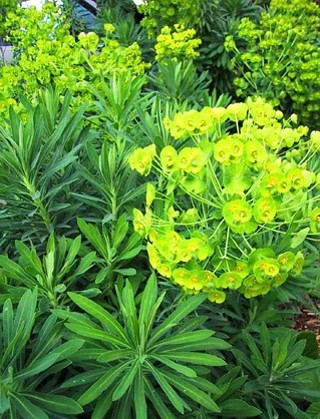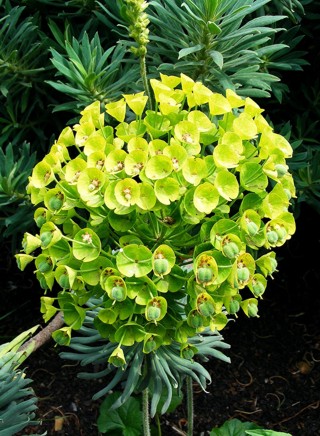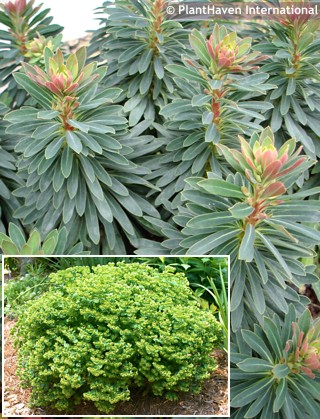Euphorbia 'GALAXY GLOW' spurge
Euphorbia
The genus Euphorbia belongs to the spurge family (Euphorbiaceae) and includes more than 2,100 species of herbs, shrubs, and trees, making it one of the largest genera of flowering plants in the world. Individual species can differ so much that you would hardly assign them to the same family. They occur on every continent except Antarctica, with the greatest diversity in tropical and subtropical Africa, Madagascar, and the Americas, though many species also extend into the temperate zones of Europe and Asia. The genus was first described scientifically by Carl Linnaeus in 1753 in his Species Plantarum, naming it in honour of the Greek physician Euphorbus, personal doctor to King Juba II of Numidia (52 BC–23 AD), who used certain spurges in medicine. A hallmark of all spurges is their unusual inflorescence called a cyathium – a miniature cluster of male and female flowers surrounded by showy bracts, which at first glance looks like a single bloom.
Did you know that the poinsettia (Euphorbia pulcherrima) is also a spurge? In Mexico it was already known to the Aztecs under the name Cuetlaxochitl, while they used its red bracts to dye fabrics and to treat fevers back then, today it is a symbol of Christmas around the world. Some spurges even pretend to be cacti. Take Euphorbia trigona, known as the “African milk tree”: its tall, angular, spiny stems could easily fool a layperson into thinking it was a cactus, and in Africa it was planted around homes as a living hedge to ward off evil spirits and thieves. The difference, however, is fundamental: cacti come exclusively from the Americas and their spines are modified leaves, while spurges exude milky sap and their spines are modified branches. Another curious character is Euphorbia milii, native to Madagascar. Truly, it looks like anything but a spurge. In Christian tradition it became the symbol of Christ’s crown of thorns because older plants develop densely spiny, twisted stems. And I must also mention our faithful, low‑maintenance houseplant, the Madagascar jewel (Euphorbia leuconeura), which reliably “weeds” itself by shooting ripe seeds across the room and wherever they land in soil, a new seedling soon appears.
When I first received a young plant of Euphorbia Galaxy Glow, I had no idea what Peter from Plantipp, the company representing this plant’s variety rights, wanted to surprise me with. But after just a couple of years of watching it grow, it took my breath away. It is SUCH a beautiful spurge that it has deservedly become the dominant feature of the entrance border in our display garden in Prague. Compact at first but eventually forming a substantial, densely branched shrub about a meter high and a bit more wide, it is unmistakable – its young shoots glow with a striking pink to purple hue. The evergreen leaves are narrow, elongated, softly hairy and therefore matte, holding a pastel olive‑green tone throughout the season.
The real fireworks arrive in late spring, when the shoot tips rise above the mound bearing large inflorescences. Their bracts begin a bright chartreuse, then turn bronze, later pink, and finally shift to shades of purple and smoky salmon. This spectacle lasts far longer than in most related varieties – stretching from May right through August. Meanwhile, the plant produces fresh new shoots with vibrant foliage, so you can easily cut away the spent stems and keep the whole clump neat and lively.
The variety originated as a chance seedling, discovered by American plantsman Pat McCracken in North Carolina. A passionate explorer, he has traveled through 19 countries in search of new and unusual plants to introduce into cultivation. Galaxy Glow is believed to be a hybrid between Euphorbia amygdaloides and Euphorbia dulcis – the latter being a native species in the Czech Republic, which explains the hybrid’s reliable hardiness through Central European winters. The plant is protected under EU Plant Breeders’ Rights No. 68088 (2024) and US Plant Patent PP28,761 (2018).
Euphorbia ‘Galaxy Glow’ offers such a flamboyant architecture that it is truly a challenge to find it neighbours worthy of its company. We have had success combining it with evergreen magnolia and dwarf cherry laurel in the background, complemented by taller phlox and swamp hibiscus. It is framed with smaller shrubs such as bluebeard or golden‑leaved choisya, while the very front belongs to hellebores, whose evergreen, dramatically different foliage provides just the right counterpoint to this already striking shrub.
Euphorbia amygdaloides and its hybrids are woody perennials typical of the warmer, though not arid, regions of the Caucasus and Turkey. They tolerate high summer temperatures but require more moisture than the drought‑adapted vegetation of southern European rocks and plains. This explains their great popularity in Great Britain, where the consistently high humidity allows spurges to thrive. In our continental conditions, Galaxy Glow does best in moderately moist but well‑drained soil of any pH. It should be kept lightly moist for the first few months, but beyond that they will rarely need more water than natural rainfall provides, especially if mulched. Feeding before flowering, and again at the end of summer is beneficial, though not essential. Galaxy Glow is hardy down to –25 °C and requires no winter protection. It is not suitable for outdoor planters, as it dislikes sudden fluctuations in temperature and moisture.
Last update: 01-10-2025






























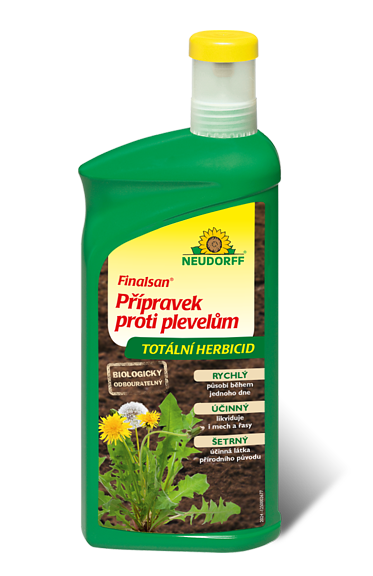


.jpg)
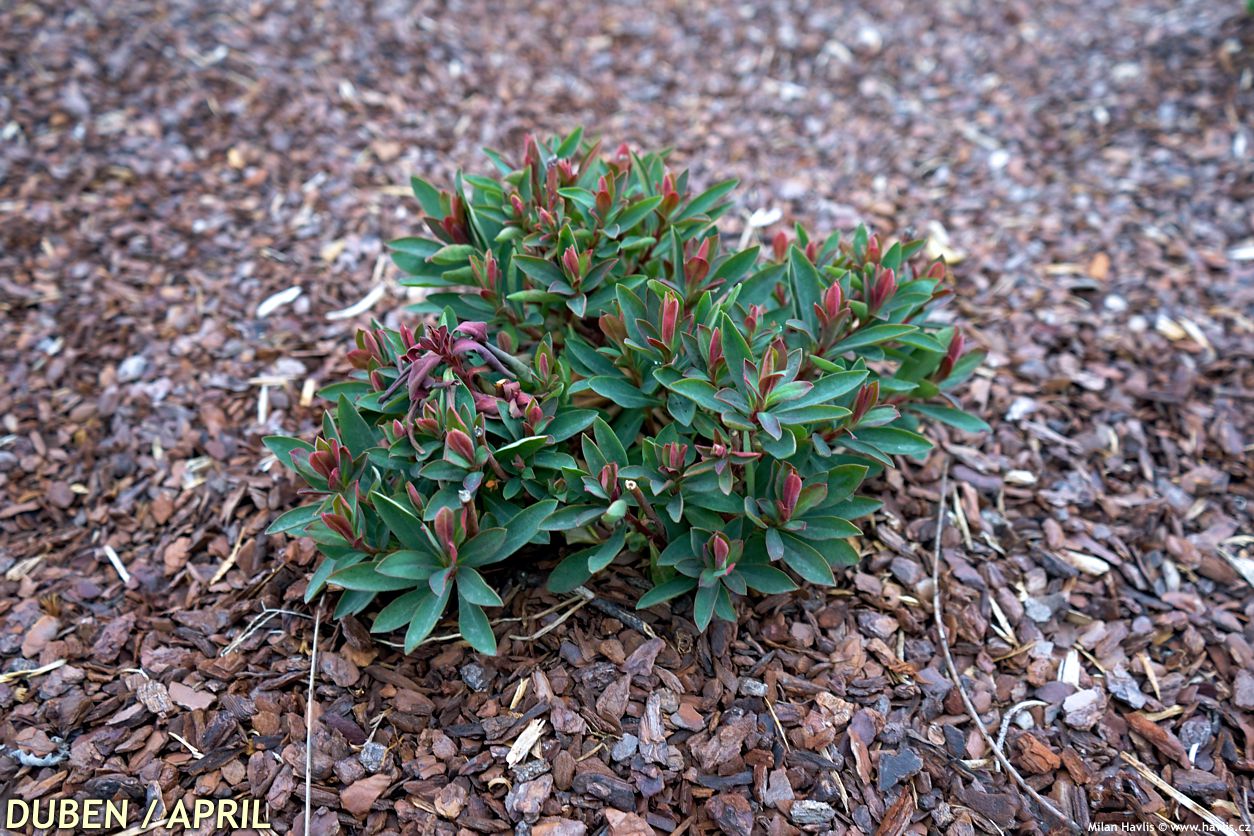
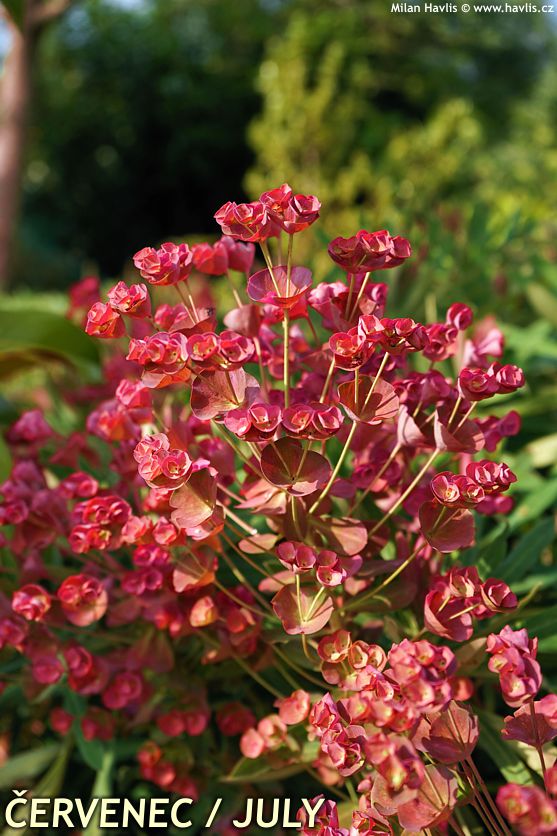
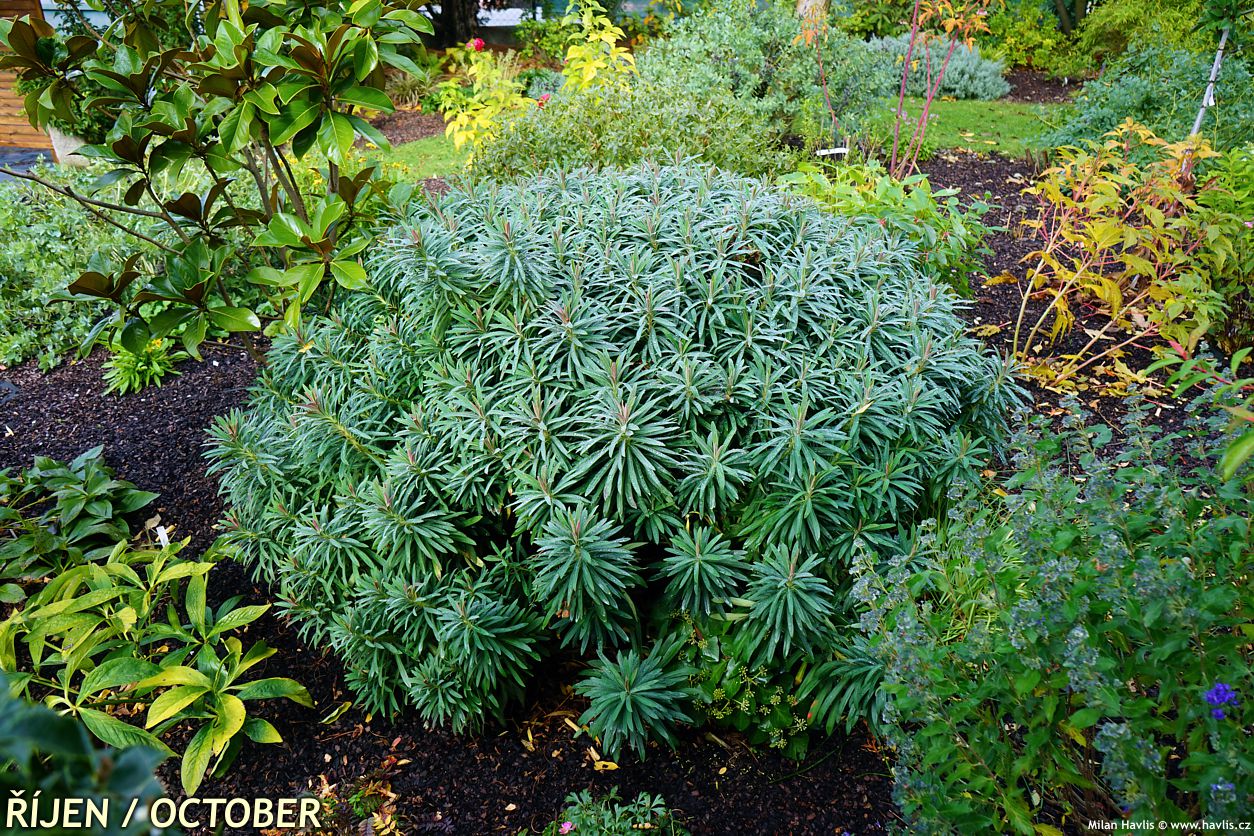
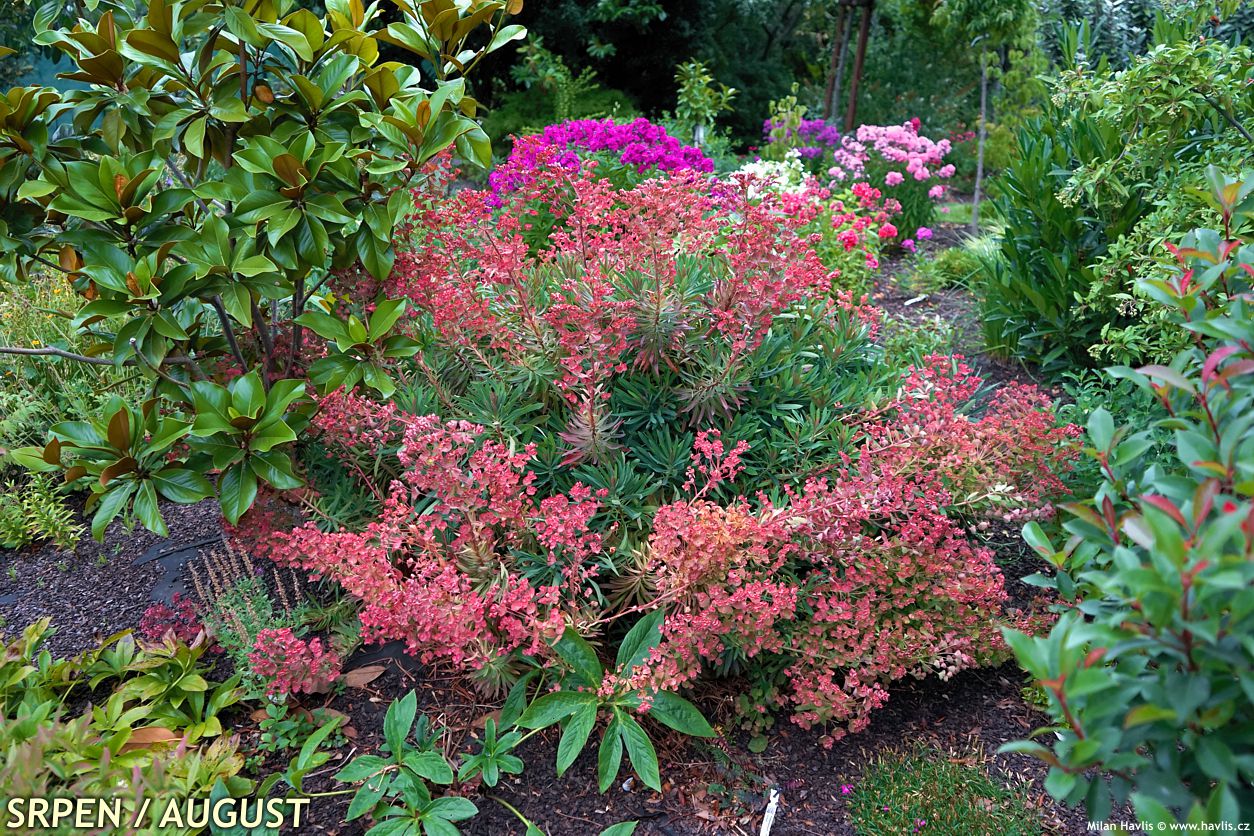
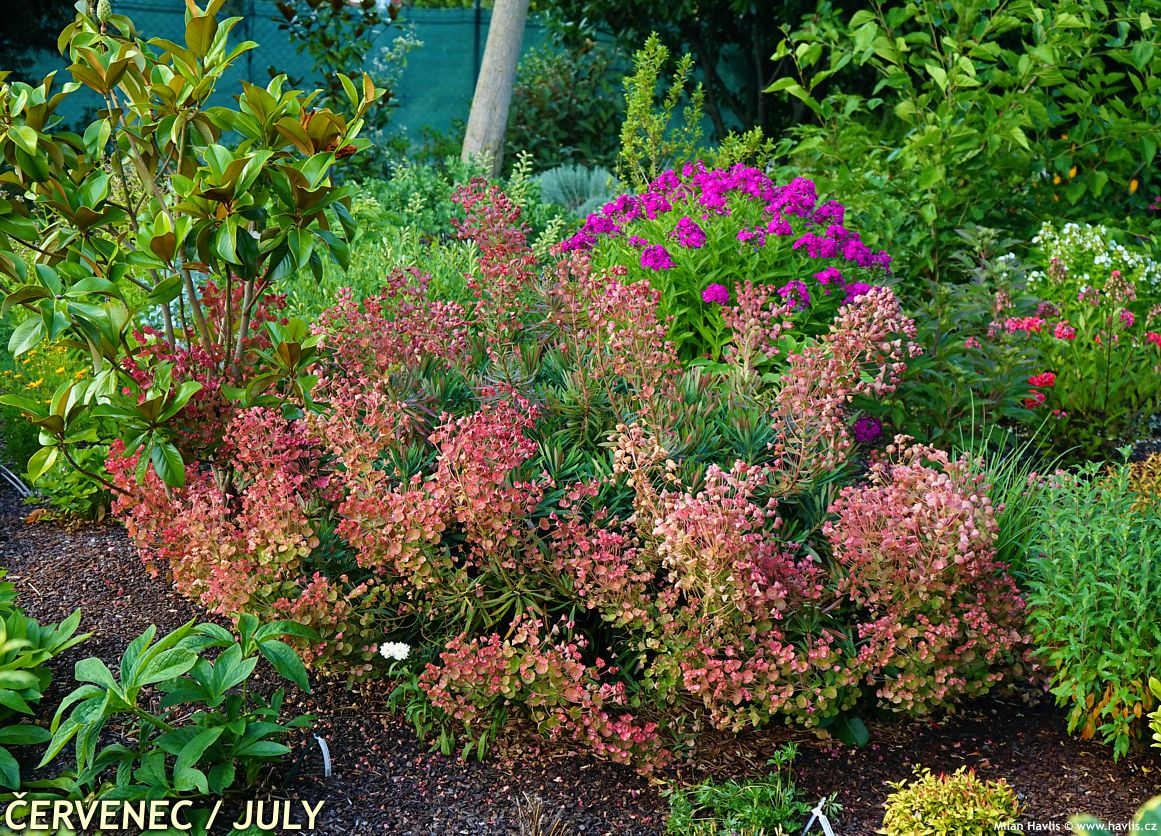
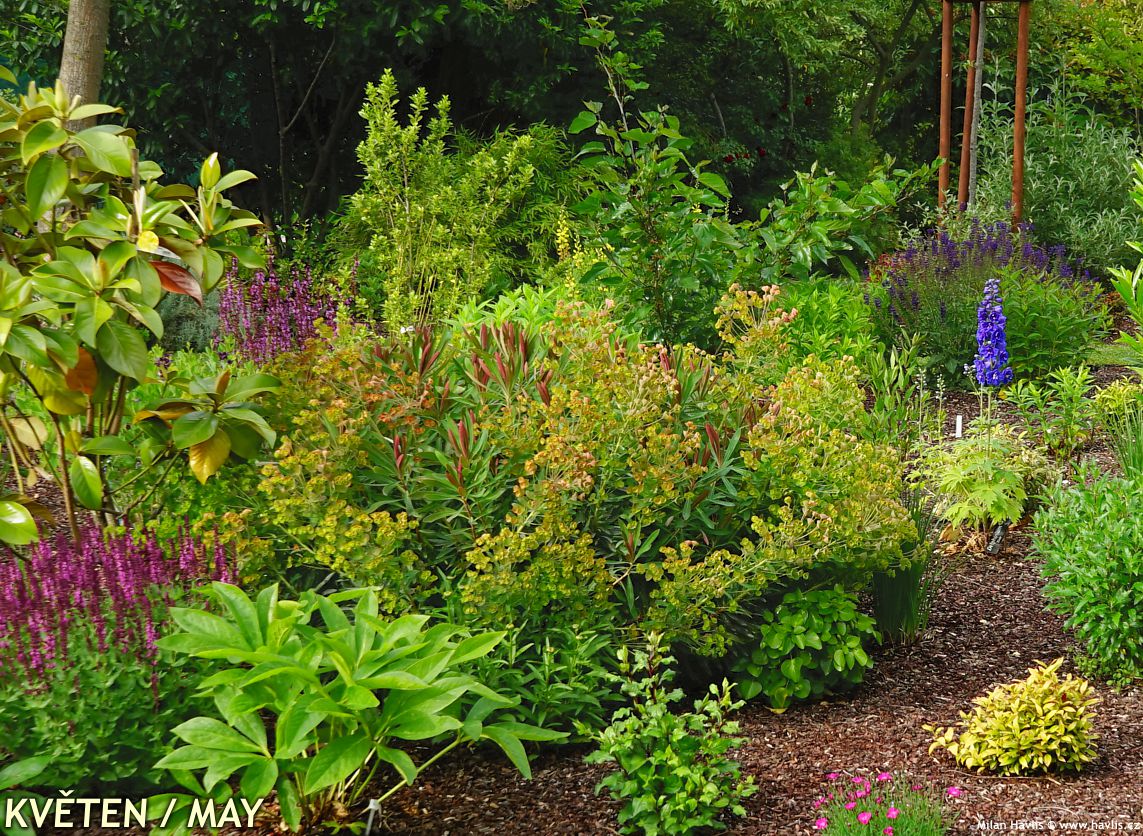
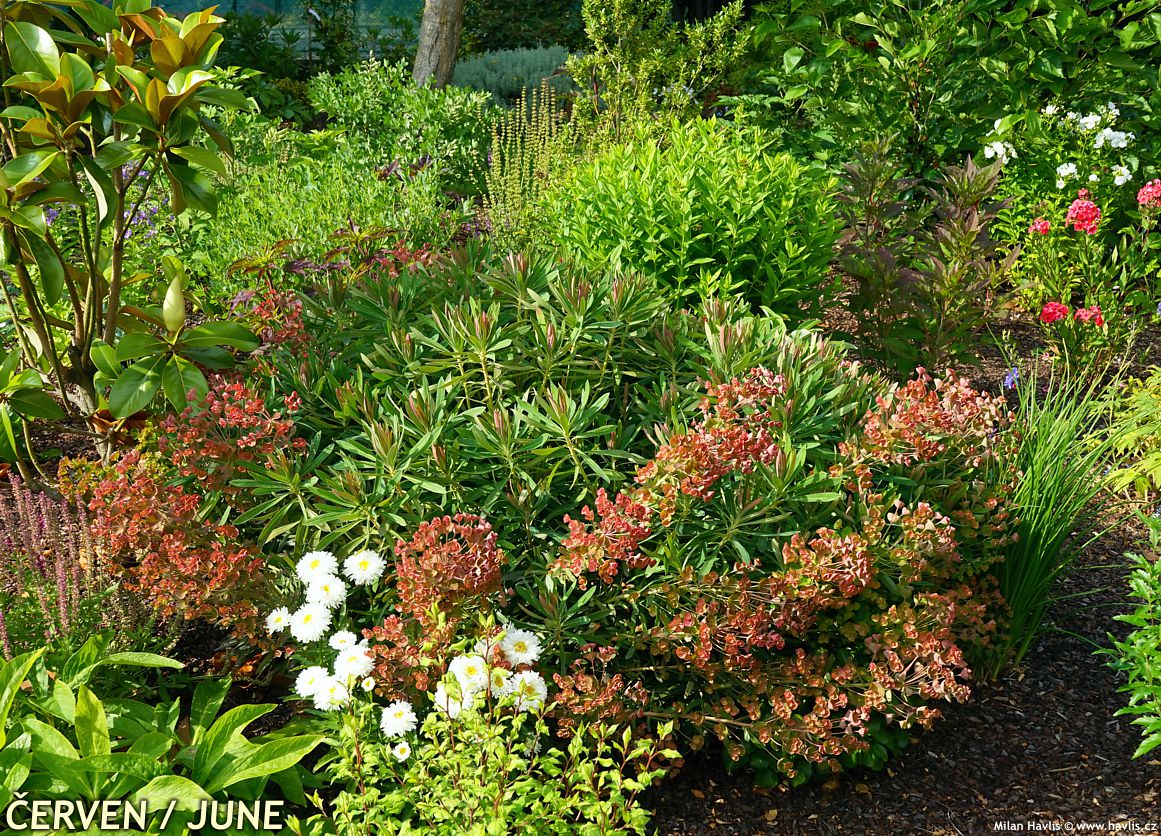
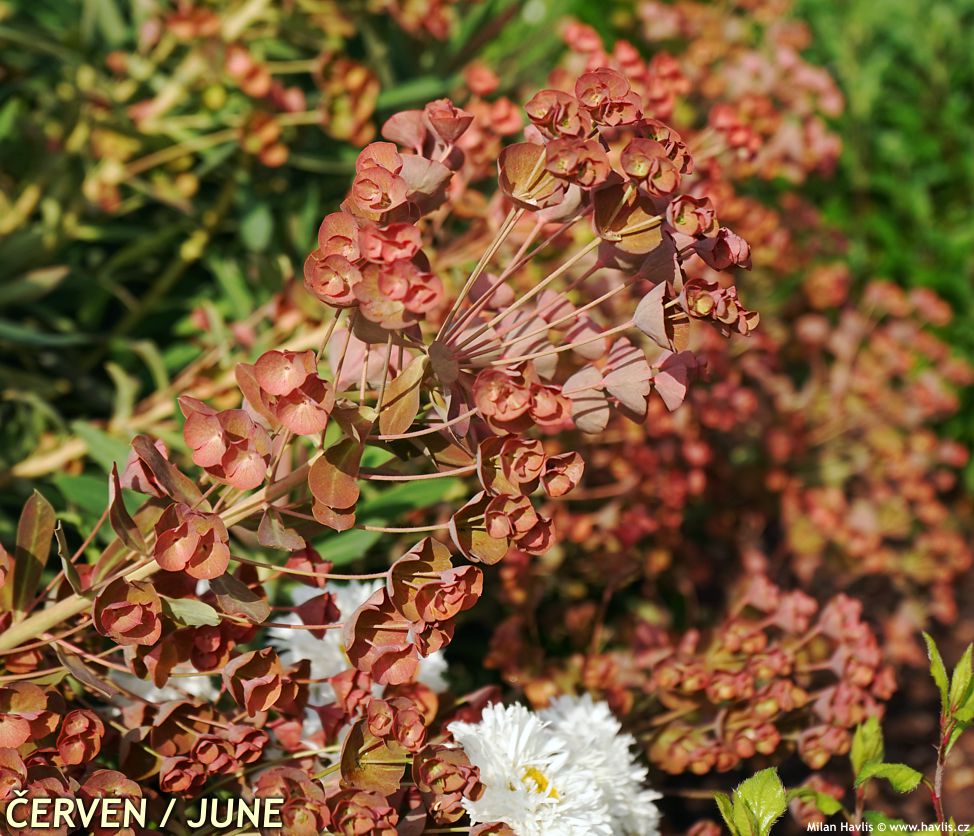
.jpg)


